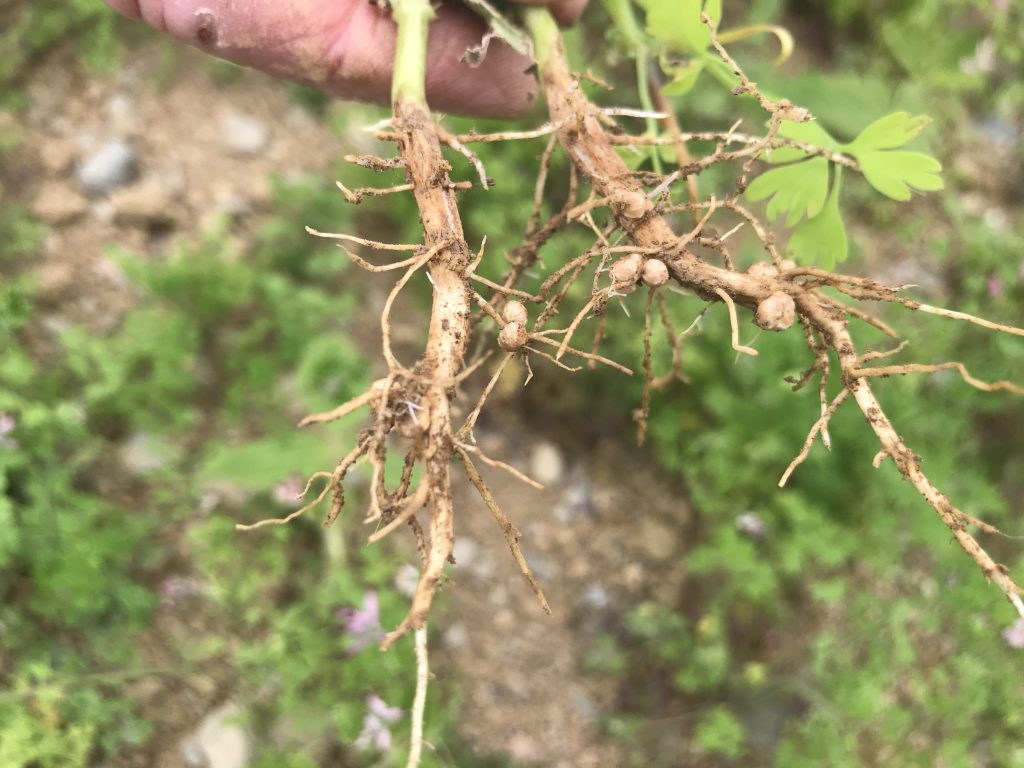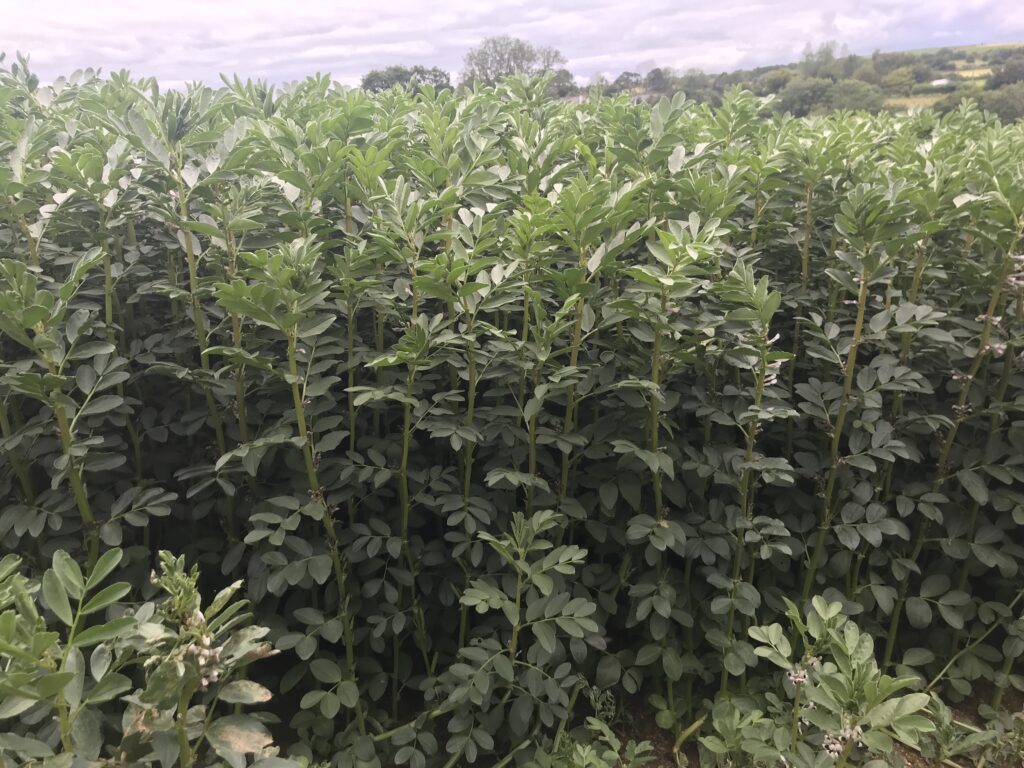This season Dairygold has seen its customers almost double the area of beans planted by its growers. This isn’t a surprise; the co-operative has been supporting and promoting home-grown protein with fixed prices for the past two years.
Behind the scenes research is also going on with agronomy and diversifying the protein portfolio.

A crop of peas near Kinsale, Co. Cork, with a 1m strip of phacelia planted in the field margin to promote biodiversity
This month, AgriLand visited a 70ac site dedicated to protein crops where Liam Leahy, head of tillage at Dairygold, is working alongside a farmer to trial peas, beans and soybeans, while also examining ways to potentially improve biodiversity.
A sea of white flowers greeted AgriLand near Kinsale in Co. Cork. The thick crop of peas was standing tall and pods were plentiful.
This year is the first in the past 20 that Dairygold customers have planted peas. In full flower, they look a picture and all going well should yield well.
Peas can be a more difficult crop to deal with than beans at times, but this thick crop looks healthy so far and the balance seems to have been achieved between getting a good stand and producing pods. The earlier harvest date will be attractive to many growers.
The crop was planted in April and harvest should be in August.
Soybeans
The next field over, as Liam says himself, is an experiment. Soybeans were planted in the last few days of April and while they established well, pigeons presented a problem.
“I really wanted to see can we grow them and we know now we can grow them,” Liam noted.
Trial and error may play a role in the early days, but already he is thinking of techniques to keep pigeons at bay next season, whether that be through the use of a companion crop or by direct drilling into a cover crop.
The crop received a pre-emergence herbicide, but Liam did not advise a follow up application and will see how it performs in the coming weeks before taking further action.
Of the plants that were there the benefits could be seen in the nitrogen-fixing nodules on the roots.
Biodiversity
In the margins of all of the fields on this site there is a pollinator strip. A buzz comes from a line of purple phacelia as you near the perimeters of each field.
Bees and other insects are thriving in the dedicated 1m-wide margin. This is something Liam hopes that more of the company’s growers will plant on their farms.
Between flowering peas, beans and phacelia this particular set of fields is a great example of Irish agriculture and what Europe strives to do with its Farm to Fork Strategy.
He commented that growers might complain when planting the strip, but when the plants are at work during the summer the value can be seen. A local bee keeper has also set up hives in the margins.
Beans in a rotation
Moving into the field of beans, which was approximately 5ft tall and full of pods, Liam commented: “Farmers have bought into the idea of rotation. Every grower sees the benefit of a crop of beans in their rotation.”
Beans compete with crops of malting barley and winter wheat for area in the Cork region but Liam added: “If you want high-yielding crops of winter wheat you need a rotation.
“We have reasonably committed growers now,” Liam explained.
However, he added that while the benefits can be seen in the next crop, the government support is still important.
He believes this support will and has to continue as more and more talk of locally-sourced protein is mentioned in the development of policy.
This particular crop of Lynx received 0-7-30 at sowing, a pre-emergence herbicide and Signum (fungicide), along with trace elements and phosphite at flowering. A follow up of Signum was applied at the end of June.
Chocolate spot was creeping into some crops at the end of June, but there were no signs in this field.
Irish ration
Feed sales are down at present, particularly for beef animals. Last year, Dairygold launched an all Irish ration and Liam re-enforced the commitment of Dairygold to Irish grain and protein. The company purchased approximately 110,000t of Irish grain in 2019.
“We’re putting large amounts of cereals into our rations. The amount of beans we have we comfortably use in all our feeds. We’ll have no cereals going into the harvest.”
The pro-active approach being taken by Dairygold, and indeed other parts of the industry, on protein crops and biodiversity is significant and in many ways is ahead of the strategies to be put in place at EU level in the coming months and years.
This is another example of the Irish tillage industry leading by example.









